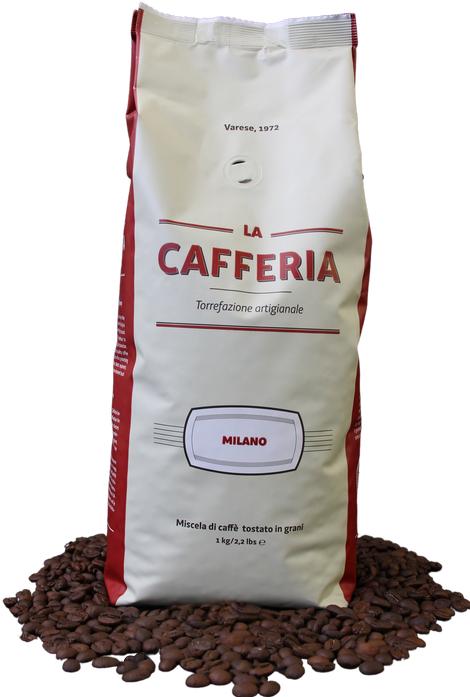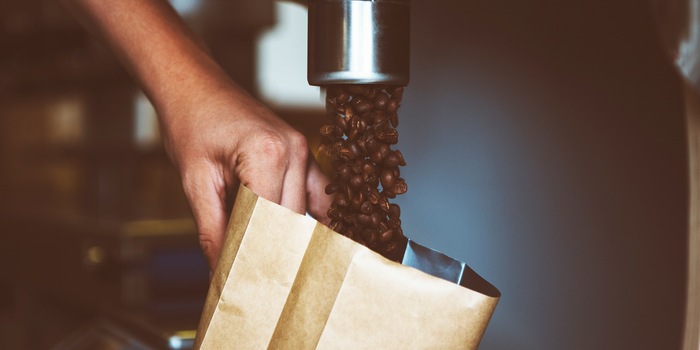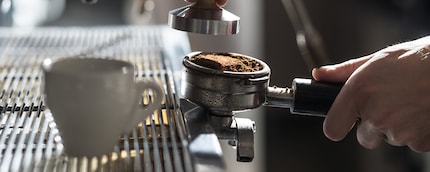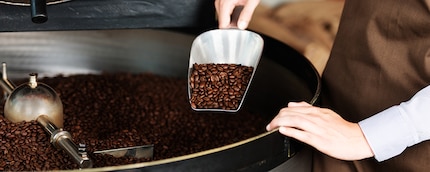

How do you recognise a quality coffee bean?
The best automatic coffee machines or machines with sieve holders are useless if the coffee beans are of poor quality. How do you recognise a quality coffee bean? Find out in this article.
Coffee is often sold ground. As a result, it is often impossible to recognise its origins. To help you, I've put together the most important information on the different types of coffee, their quality characteristics and the different roasting stages.
Origins of the coffee plant
In the 17th century, the coffee plant from Ethiopia and Sudan made its way to Europe. Today, the plant is grown all around the famous coffee belt. This belt extends on either side of the equator, between latitudes 23 degrees north and 28 degrees south. The world market is mainly dominated by two varieties of bean: Arabica and Robusta. Both differ in their cultivation requirements and their components.
Arabica and robusta
With a 60% share, Arabica is the most widely planted coffee variety. It is considered to be particularly noble, although only a small proportion of harvests are truly top-of-the-range. The beans come mainly from South America and have a high level of aromatic oils. Robusta, as its name suggests, is more robust in cultivation and is grown mainly in Africa and Asia. This variety also has a higher caffeine and chlorogenic acid content. The latter is not really recommended for coffee drinkers with sensitive stomachs, as the acid stimulates kidney function and gives you a stomachache if you drink too much coffee on an empty stomach. Due to the lower chlorogenic acid content, the taste of Arabica beans is smoother and rounder, almost a little sweet compared to the rather bitter Robusta beans.
.
See all coffee beans

Why is arabica more expensive?
Arabica coffee plantations are grown at high altitudes, which makes growing and transporting the beans difficult. What's more, Arabica requires more care and pesticides, which is not the case with Robusta, which is more resistant. If we also consider the fact that Arabica coffee beans are, in addition, more prized for their taste, it's not surprising that prices are also higher.
.
However, this does not mean that Robusta is a "cheap variant". On the contrary - some coffee lovers even prefer the pungent, pronounced taste. Both varieties are arguably the best when blended. Especially for Italian espresso, both coffee beans need to be included in the blend to create the right balance of taste and caffeine.

Roasting coffee
The pulp of the fruit is removed directly after harvesting to allow the beans to dry in the sun. After drying in the harvesting country, the brown gold is transferred to the processing country. The still green beans are heated in a drum. Thanks to the drum's rotary movement, the coffee beans are heated evenly. Roasting reduces the chlorogenic acid, which explains why heavily roasted beans contain less acid than medium-roasted beans. As with heating a product containing water, the water evaporates during the process. At the same time, the coffee bean expands and thus gains in volume.
As a general rule, there are six levels of roasting. These depend on the duration of roasting. The first levels of roasting are reached after the first crack of the coffee beans. Darker roasts are reached shortly before the second crack, which can last up to 20 minutes. The stronger the roast, the more bitter the coffee.
In large burners, hot air roasting is often used. It can roast up to 500kg of coffee beans in two minutes. In this way, weight loss can be reduced thanks to high water loss, which is a good thing from an economic point of view for coffee roasters. Because of the short roasting time, flavours develop less well and the chlorogenic acid responsible for acidity is eliminated less well.

Recognising quality
To be able to determine the quality of your coffee, buy coffee beans and not ground coffee. Grind the beans just before you use them; not in advance. If you look at the beans after you've bought them, there are several things to look out for. If small holes are visible on the beans, the coffee plant has been affected by pests. In the pack, broken beans should be as rare as possible. If this is not the case, it could indicate a careless harvesting and sorting method. If the beans have been affected by mould, this is not a health hazard due to the high temperatures involved in roasting - but mould has a huge influence on taste. Mould can be spotted on coffee beans with visible stains. Freshness also plays a role. Coffee tastes best between three weeks and three months.
The right degree of grind
The answer to the question of degree of grind is simple. The more water in contact with the coffee, the coarser the coffee should be ground. If the powder is too fine, too many bitter components are released. Do you want an aromatic espresso? Then you need to grind the coffee beans finely. Here, the water is pressed through the powder at high pressure. For filter coffee, we recommend using a medium to coarse grind because of the contact time of around three minutes between the water and the powder. As this time is even longer for the piston coffee maker, the coarse grind is the most appropriate.



Kimbo Espresso
250 g, Medium roast
Friends, family, cats and good wine are my lifeblood.